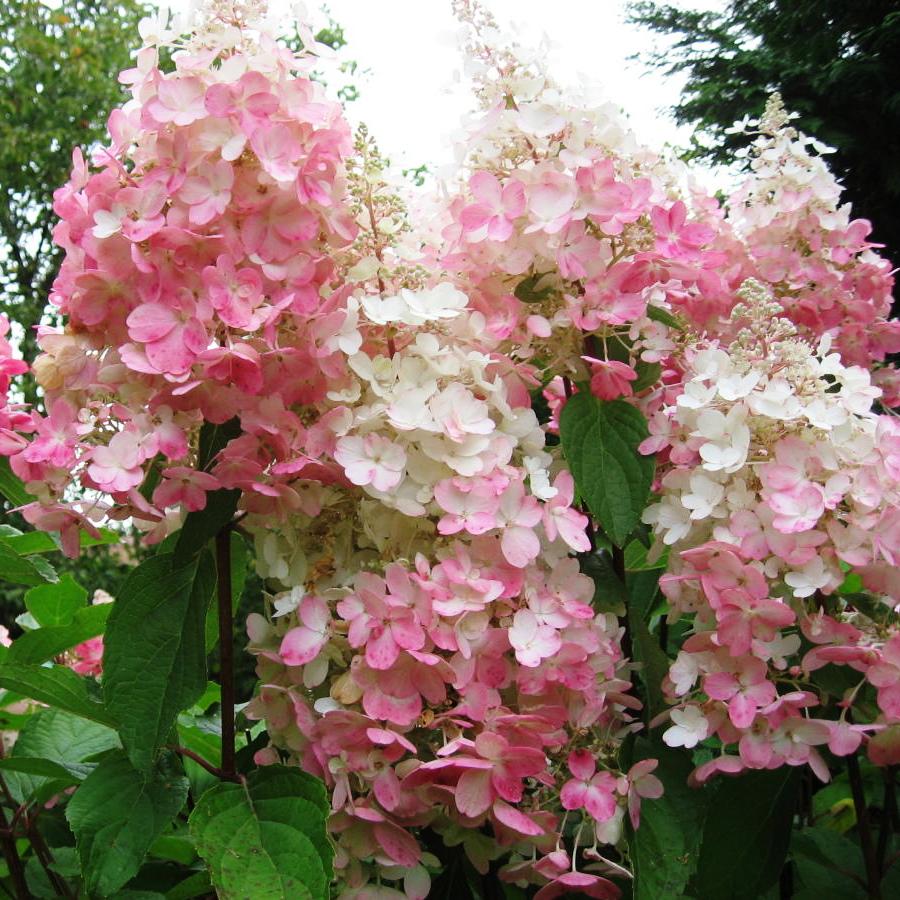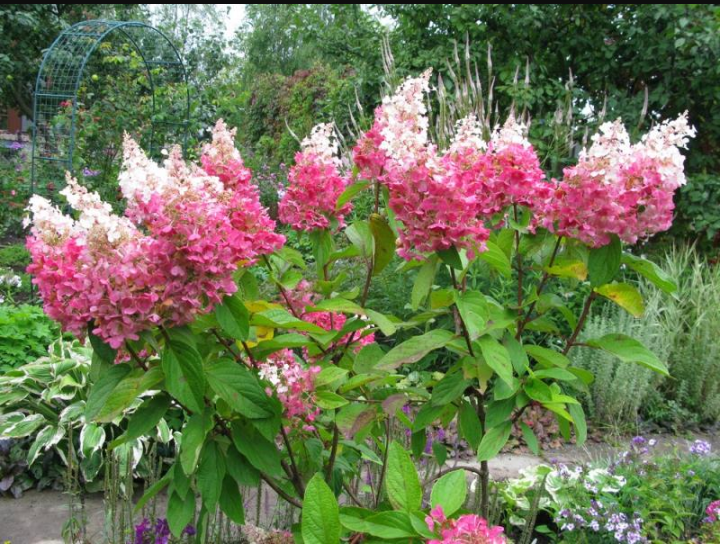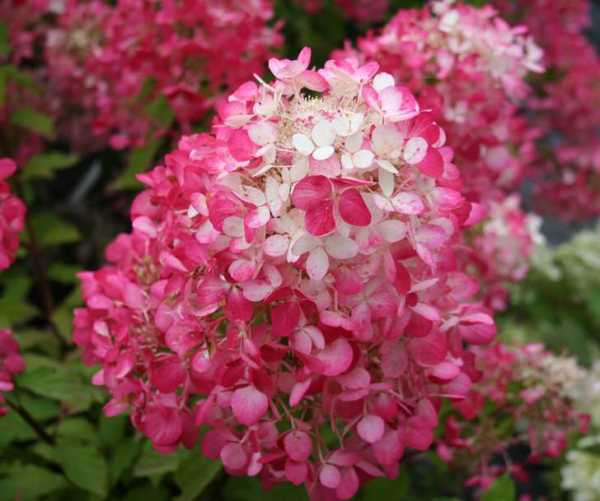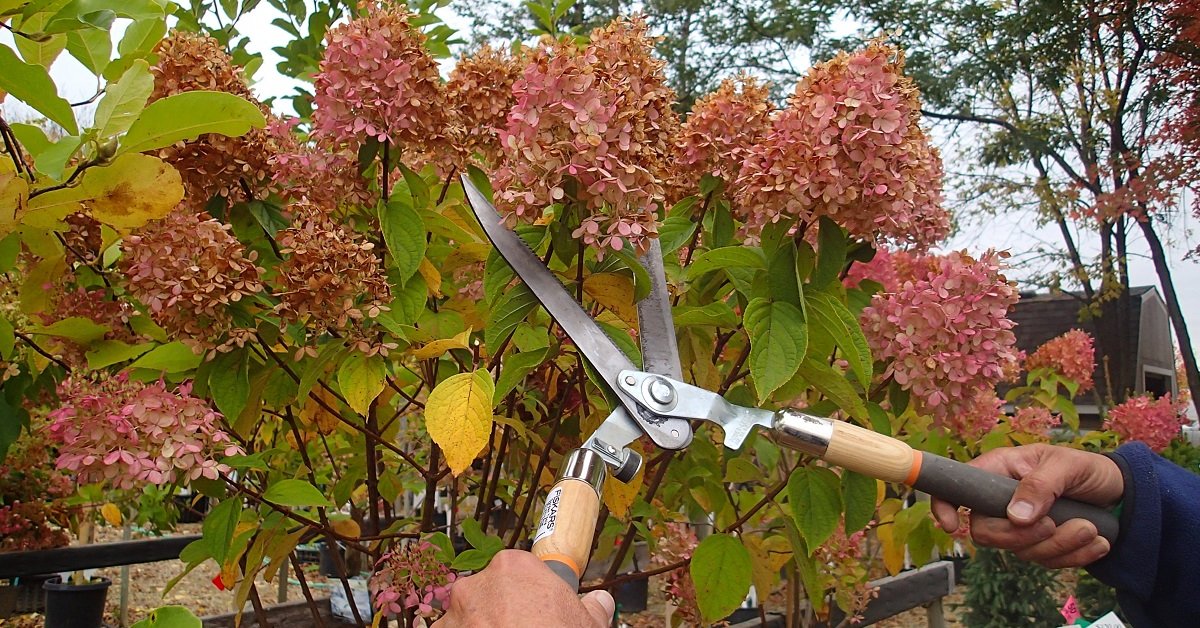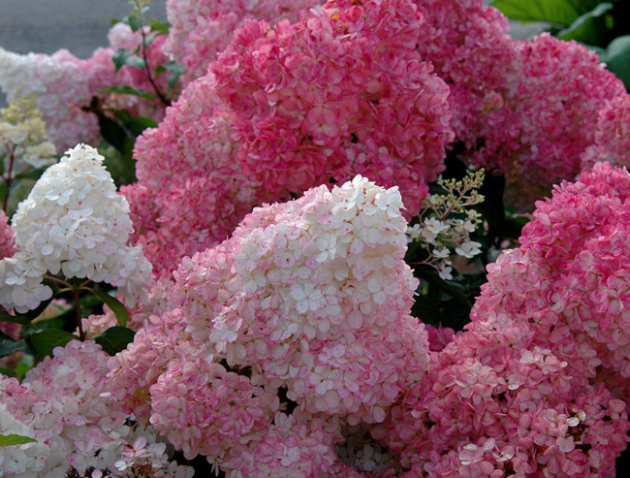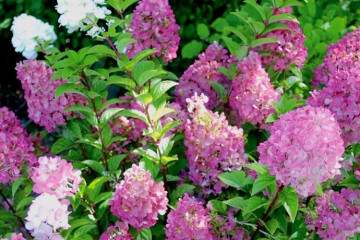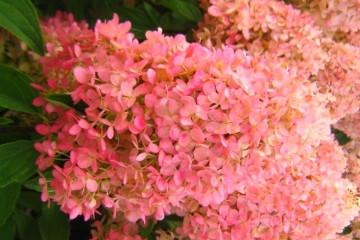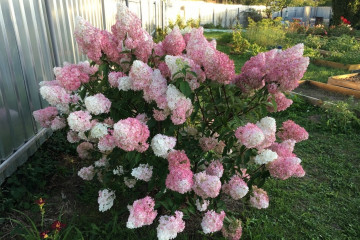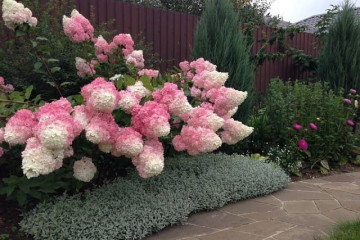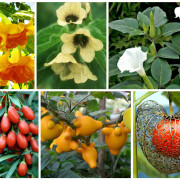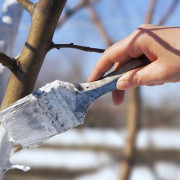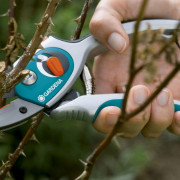Hydrangea Pinky Winky (Hydrangea Paniculata Pinky Winky) - description
Content:
Thanks to hydrangea, you can decorate the most nondescript corner of the site. She will add tenderness to the garden, add a bright touch to it. Among the hydrangea varieties, Pinky Winky has become a favorite. It was bred several years ago by foreign breeders, but in this short time the shrub has become popular among summer residents.
Origin
The variety was bred in Belgium in 2003.
The shape of the crown is a huge ball that “does not fall apart” after a while.
Description of Pinky Winky hydrangea
This is a beautiful lush and at the same time compact shrub with unique inflorescences that change tone during flowering. According to numerous reviews of gardeners, Pinky Winky's hydrangea is an impeccable variety for central Russia.
The leaves of the variety are large, contain light pubescence on their upper part. In summer, they have a rich green tone, by autumn they become bright red.
The shoots of the variety are massive and erect, capable of reaching a height of up to 2 m. Therefore, the shrub can not be tied up, fearing damage to the buds.
An obvious delight of the variety of this hydrangea is the cone-shaped inflorescence (brush), the length of which is up to 20 cm. It contains both sterile and fruiting flowers. Pinky's hydrangea blooms in mid-summer (from about 10 July), flowering lasts until the onset of cold weather (in October).
The shrub blooms with a pleasant delicate white color, which gradually changes, by the end of flowering, the buds of a purple-pink tone become. Due to the peculiarity of the hydrangea, gradually changing the tone of the buds on one bush, you can observe inflorescences of various colors.
You can observe how new white flowers are formed around the purple inflorescence. Thanks to this, the shrub becomes more decorative.
Growing a plant on the site
In the summer season, summer residents are especially acutely puzzled by the issue of improving their own territory. In an effort to transform the garden, various garden plants can help, among which hydrangeas of different varieties are especially popular, especially Pinky Winky.
It is necessary to choose a plant seedling for planting. There are many varieties of hydrangeas on the market today. Such a wide choice is primarily due to the fact that Pinky Winky's hydrangea is quite popular among gardeners.
Moreover, the flowers take root well in the Russian climate, which makes their cultivation the least problematic for gardeners. They, as a rule, do not bring much trouble to gardeners, however, even this variety has its own characteristics that should be taken into account when planting.
Preparation and selection of the landing site
When planning to plant a shrub on your site, you need to take care of the chemicals and fertilizers that will be required when caring for the plant. After all the purchases, you should start preparing for landing:
- Particular attention should be paid to the amount of light in the place where the Pinky Winky hydrangea will grow.It is worth giving preference to the area that is constantly under good lighting. Panicle hydrangea is characterized by sufficient light-requiring. Pinky responds well to short shading throughout the day. The second moment in choosing a place is the wind. This variety does not like chapping, so the site should be protected from the wind as much as possible.
- The soil should be loose, it is good to let moisture and air pass through so that the plant has enough nutrition.
- You need to take care of organic fertilizers in advance. Manure should not be applied to the soil when planting Pinky. In the process of overheating, it begins to increase the temperature of the earth, which has a bad effect on the condition of the roots and the entire shrub. Therefore, it is necessary to purchase humus in advance or lay manure so that it perepil.
Planting a variety in a permanent place
To plant a plant, a hole of 50 * 50 cm is dug, humus is laid to its depth, and earth is sprinkled, then peat. Some gardeners make a nutrient mixture from equal parts: humus, peat, sand and rotted leaves. Water is poured into the pit. A shrub is placed on top of the substrate, the roots are carefully buried, holding the basal neck a few millimeters above the pit. The roots are covered with earth, and the soil around the shrub is compacted. The area around the bush is spilled with water.
If you plan to plant several hydrangea plants, the distance between them should be at least 1.5 m.
Reproduction of Pinkie Winky hydrangea
Before planting, it is also worth deciding directly on the type of reproduction of the future hydrangea bush. Modern summer residents tend to adhere to two main types of reproduction: seed and cuttings.
The seed species is considered to be more professional: it will not be adhered to by amateur gardeners, but by experienced flower growers and breeders. Propagation of hydrangea by cuttings is a less time-consuming process.
Cuttings
First, it is worth collecting planting material, which can be obtained, for example, from neighbors during the pruning of the plant in summer when the inflorescences are formed. After the removed shoots, it is necessary to prepare pieces with several (preferably two) nodes, then deepen the plant into a container with the mixture by two to three centimeters and water. When the shoots take root, the hydrangea needs to be transplanted into the open ground in the garden.
Layers
In early spring, soil is dug around the bush, fertilized and spilled. After that, the shoot is bent to the ground and "pinned". You can sprinkle it with earth right away, you can do this in a few days. By the end of August, young shoots will appear from the rooting site. Closer to October, each shoot is separated and buried in soil.
Pinkie Winky Hydrangea Care
It is necessary to pay special attention to the care of the hydrangea. All varieties of this plant have approximately the same requirements for the conditions of their cultivation, however, it is worthwhile to carefully study the requests of the acquired variety, since it may be capricious towards its environment.
In order for old shrubs to bloom profusely, it is necessary to shorten the shoots every year (by 2/3). Any pruning is carried out in early spring, until the leaf buds have blossomed.
Watering mode
The Pinky Winky hydrangea variety is quite hygrophilous, therefore it needs regular and abundant watering. Water the plants at least 2 times a week.It calmly tolerates a short drought, but for a long time without moisture, the plant will begin to shed its leaves, the buds will darken.
To reduce the frequency of watering and retain moisture in the soil, cover it with sawdust or straw. You can use peat for these purposes.
Top dressing
These plants also differ in their soil requirements. Hydrangea usually takes root better in moisture-consuming soil with high air permeability. She treats acidic or slightly acidic soil well, loves calcium, but you should not add manure as fertilizer or feed the plant with nitrogen.
Plants are fed with saltpeter or complex fertilizers with microelements: young bushes only in the autumn period before wintering, old ones - 2 times a year (during the appearance of the first leaves and in autumn).
Preparing for winter
Young plants (up to 3 years old) are fragile, so they need to be covered for the winter. Rotted manure, dry foliage or peat can be used as a covering material. The thickness of such a shelter should be at least 15 cm. The root zone of the shrub is covered. With age, hydrangea will become more winter-hardy, it will be easier for it to tolerate low temperatures.
Shrubs bloom until the very cold, so you need to control this moment. With the appearance of the first snowfalls, it is necessary to cut off the buds, since the shoots can break off under the weight of the snow.
It is easy enough to care for garden hydrangeas, the process does not bring too much trouble for gardeners. The plant takes root well in a wide variety of conditions. That is why the Pinky Winky hydrangea is a great option for transforming your garden.

